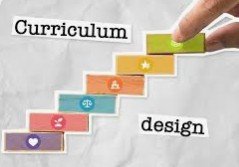Curriculum Design for Educators

About Course
This course provides educators with the foundational knowledge and practical tools necessary to design, implement, and evaluate curricula that align with learning goals, standards, and student needs. Teachers will explore curriculum theory, backward design, differentiation, assessment alignment, and strategies for incorporating 21st-century skills. Whether you’re a novice teacher or an experienced educator revisiting your curriculum strategies, this course supports you in creating learner-centered, adaptable, and impactful curricula.
Course Content
Unit 1: Foundations of Curriculum Design
Unit 2: Identifying Goals and Learning Outcomes
Unit 3: Designing Instructional Content and Activities
Unit 4: Assessment and Evaluation
Unit 5: Differentiation and Adaptability
Unit 6: Implementing and Reflecting on Curriculum
Student Ratings & Reviews

No Review Yet